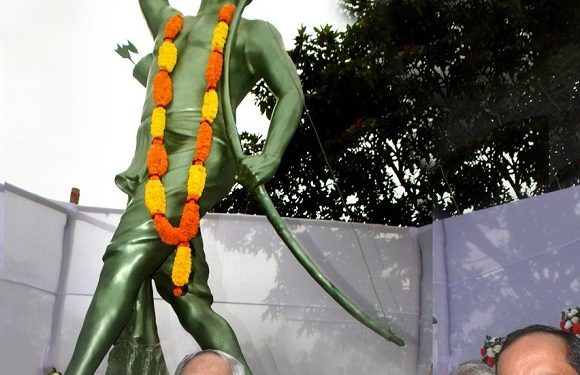Bhubaneswar: Chief Minister Naveen Patnaik unveiled a statue of tribal leader Birsa Munda, the iconic hero and a tribal freedom fighter hailing from the Munda tribe, on the occasion of the International Day of the World’s Indigenous People (World Adivasi Day).
Birsa was in the forefront of the Millenarian Movement that arose in Bihar and Jharkhand in the early 19th century under British rule.
Addressing the gathering, the CM said, “Today is Kranti Diwas. I feel proud and happy to unveil the statue of Saheed Birsa Munda in Bhubaneswar. On this occasion, I pay homage to the brave tribal martyrs of the land, Saheed Birsa Munda and Saheed Laxman Nayak.”
In Odisha, tribals comprise 22 per cent of the population. There are 62 distinct Scheduled Tribes, and 34 of the 147 Assembly seats are reserved for STs. Moreover, five out of 21 Lok Sabha seats are also reserved for ST candidates.
Munda, a resident of Ulihatu village in Erki block of Khunti district in Jharkhand, led a guerrilla uprising against the British in the 19th century. He was captured and jailed in Ranchi where he died of cholera at the age of 25.
Birsa Munda’s slogan threatening the British— ‘Abua raj seter jana, maharani raj tundu jana’ (Let the kingdom of the queen be ended and our kingdom be established) — is remembered today in Orissa, Bihar, West Bengal and Madhya Pradesh.
Munda rallied tribal people to fight the forcible land grabbing carried out by the British which would turn tribals into bonded labourers and force them into abject poverty.
Known as ‘Dharti Abba’ or the Earth Father, Birsa Munda stressed the need for tribals to study their own religion and not forget their cultural roots. He influenced his people to realise the importance of owning land and asserting their rights.
New Wrapping
The Union Cabinet’s new Unified Pension Scheme (UPS) has set tongues wagging. Touted as a clever blend of the Old...
Read more





































